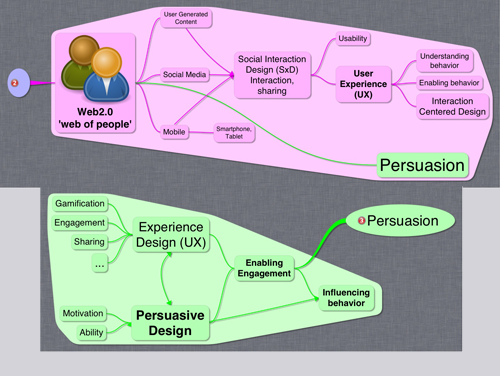Persuasieve technologie – onderzoek: Energiebesparing is een hot topic; maar het energie-verbruik in huishoudens ontsnapt aan de aandacht van consumenten. Goede feedback over energie-verbruik is cruciaal, maar feedback via smart metering en internet schiet tekort. Poging tot verbetering.
Persuasieve technologie – onderzoek
Achtegrond
Energiebesparing is een hot topic; maar het energie-verbruik in huishoudens ontsnapt aan de aandacht van consumenten.
Goede feedback over energie-verbruik is dus cruciaal, maar de feedback via smart metering en internet schiet tekort: webtools zijn slecht toegankelijk en niet te begrijpen.
De doelstelling van dit onderzoek was daarom een betere interface te ontwerpen, die toegankelijk, recht-toe-recht-aan en begrijpelijk is. Over de effecten van staafdiagrammen en kleurcodes.
Samenvatting
In light of global warming, energy conservation is indispensable. Residential electricity use, nevertheless, escapes consumers’ notice. Thus feedback is essential, yet households’ access to information is extemely limited. Smart metering makes continuous feedback over the internet possible, but users perceive existing web tools to be inaccessible and incomprehensible. Hence the aim has been to design a user interface to increase awareness and energy efficiency in households. Ease of access and straightforwardness have been established as key factors and conventional bar charts in combination with color coding have proved useful in this respect.
Methode
Onder andere focus groepen
Uit de conclusie
It is absolutely essential that statistics services require a minimum of input from users, and that they use the most elementary and easily accessible interface design possible. Conventional bar charts in combination with color coding systems have proved to be very functional in this respect. […]
A clear finding of this study is users’ perceived need for breakdown feedback, which for the purpose of this study has been defined as information on how electricity is used, broken down by type of domestic appliance. These findings accord with those of several previous studies, which all conclude that electricity consumers have a need for breakdown feedback for guidance in increasing energy efficiency in their home.
[titled_box title=”Publicatiegegevens” textColor=”#ffffff”]
Bartusch, Cajsa, & Porathe, Thomas (2011).
Climate-smart information design: Visualizing residential electricity use over the internet. Information Design Journal, 19(1), 3-17.
doi: http://dx.doi.org/10.1075/idj.19.1.02bar
[/titled_box]
[margin40]





